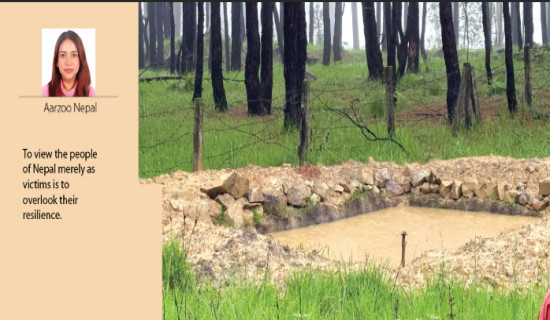- Friday, 5 December 2025
14 nests of endangered vultures found in Baitadi
By Gokarna Dayal,Baitadi, Nov. 22: Fourteen nests of endangered vultures have been discovered in Baitadi. Known as ‘nature's scavengers,’ these vultures play a crucial role in maintaining ecological balance.
A Bird Conservation Nepal (BCN) survey revealed that Himalayan Griffon vulture (Himali khairo giddha) has been breeding in various locations across the district. The study found that the district's breeding success rate of vultures is 75 per cent. Nests of these endangered vultures were located on cliffs near Khodpe of Patan Municipality-8. Similarly, nearby areas in the district were found to host nests of Red-headed vultures.
According to Hirulal Dagoura from BCN's provincial office in Dhangadhi, after Kanchanpur and Kailali, Baitadi ranks as one of the important habitats for vultures in the Sudhurpaschim Province. Among Nepal's nine vulture species, Baitadi is home to critically endangered species like the Slender-billed vulture, alongside Himalayan Griffon, White-rumped, Long-billed and Bearded vultures.
Dagoura said that BCN has been actively conducting vulture surveys in Baitadi and other districts of the Far-Western region to support conservation efforts. He stressed that Baitadi provides an ideal and secure habitat for vultures.
Food shortage and forest fires
Despite their importance in maintaining environmental balance, vultures in hilly districts like Baitadi face challenges due to the shortage of food. Farmers bury the carcasses of dead livestock, depriving vultures of their primary food source. Likewise, forest fires threaten vulture nests.
Veterinarian Dr. Bishal Pathak from the Veterinary Hospital and Livestock Service Centre in Patan, Baitadi, said that the ban on the use of the harmful drug diclofenac has benefited vultures. “Unlike in the past, diclofenac is no longer used to treat sick livestock. This drug used to cause kidney failure in vultures that fed on carcasses of treated animals. Now, there are no harmful drugs affecting vultures. However, the practice of burying dead livestock might still be limiting their food supply,” Dr. Pathak said.
Dagoura highlighted forest fires as another significant challenge. Studies have shown that Nepal's vulture population has declined by 90 per cent over the past two decades. He said, “Vultures breed between December and February, laying eggs and incubating them for 75 days. By April-May, chicks hatch. Unfortunately, this coincides with the forest fire season in Baitadi, which destroys their nests.”
In the last dry season, forests in Ward Nos. 8, 9, and 10 of Patan Municipality experienced devastating fires that destroyed vulture nests. Ward Chairman Dhanbir Singh Kunwar said that despite appeals, the Division Forest Office failed to control the fires.
Madan Joshi, information officer at the Division Forest Office, said that community forest user groups have been conducting awareness programmes about forest fire prevention.

















